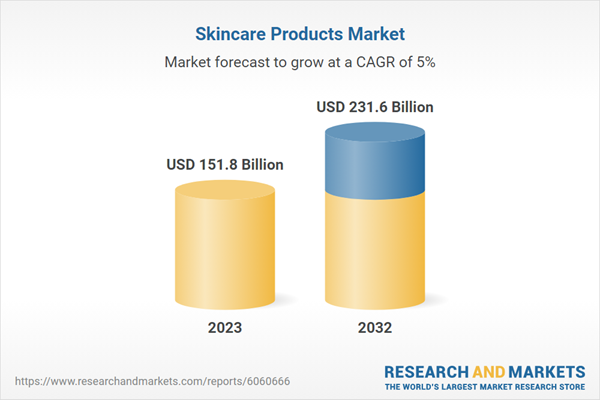Shifting lifestyle trends and growing disposable incomes have also played a crucial role in shaping the skincare industry. The popularity of self-care rituals, fueled by wellness-oriented lifestyles, has encouraged consumers to invest in premium and specialized skincare products. Additionally, the demand for gender-neutral and inclusive skincare solutions has gained traction, with brands expanding their product lines to cater to diverse skin types and concerns. The increasing penetration of e-commerce and direct-to-consumer (DTC) brands has made it easier than ever for consumers to access a wide range of skincare solutions, further driving market expansion.
The market is segmented by product type into facial care, body care, lip care, hair care, and others. Among these, facial care remains the dominant segment, valued at USD 53.7 billion in 2023 and projected to reach USD 83.4 billion by 2032. The soaring demand for cosmetic facial products, such as anti-aging serums, hydrating creams, and brightening solutions, has contributed to this segment’s robust growth. Strong brand positioning, influencer-driven marketing, and technological advancements in skincare formulations have made facial care an essential component of daily routines. Consumers continue to seek multifunctional products that deliver immediate results while improving long-term skin health.
By ingredient type, the skincare products market is categorized into chemical and natural-based formulations. The chemical-based skincare segment leads the market, holding a 64.5% share in 2023. The effectiveness of active ingredients such as retinoids, peptides, and exfoliants in addressing concerns like pigmentation, acne, and aging has solidified their dominance in the industry. Consumers increasingly prefer science-backed formulations that deliver targeted results, contributing to the popularity of advanced chemical-based skincare solutions.
The U.S. skincare products market was valued at USD 23.6 billion in 2023 and is projected to grow at a CAGR of 3.5% between 2024 and 2032. A well-established beauty industry, strong consumer purchasing power, and brand recognition continue to drive market expansion. The rising trend of dermatologist-approved, customized, and luxury skincare products has fueled higher consumer spending in the sector. Growing interest in organic, clean-label, and anti-aging solutions has further strengthened demand for premium skincare innovations, with brands leveraging cutting-edge science to develop high-performance formulations.
Comprehensive Market Analysis and Forecast
- Industry trends, key growth drivers, challenges, future opportunities, and regulatory landscape
- Competitive landscape with Porter’s Five Forces and PESTEL analysis
- Market size, segmentation, and regional forecasts
- In-depth company profiles, business strategies, financial insights, and SWOT analysis
This product will be delivered within 2-4 business days.
Table of Contents
Companies Mentioned
The companies featured in this Skincare Products market report include:- Amorepacific
- Avon
- Beiersdorf
- Chanel
- Clarins
- Coty
- Estee Lauder
- Johnson & Johnson
- Kao
- L'Oreal
- LVMH
- Mary Kay
- P&G
- Shiseido
- Unilever
Table Information
| Report Attribute | Details |
|---|---|
| No. of Pages | 225 |
| Published | February 2025 |
| Forecast Period | 2023 - 2032 |
| Estimated Market Value ( USD | $ 151.8 Billion |
| Forecasted Market Value ( USD | $ 231.6 Billion |
| Compound Annual Growth Rate | 5.0% |
| Regions Covered | Global |
| No. of Companies Mentioned | 16 |









